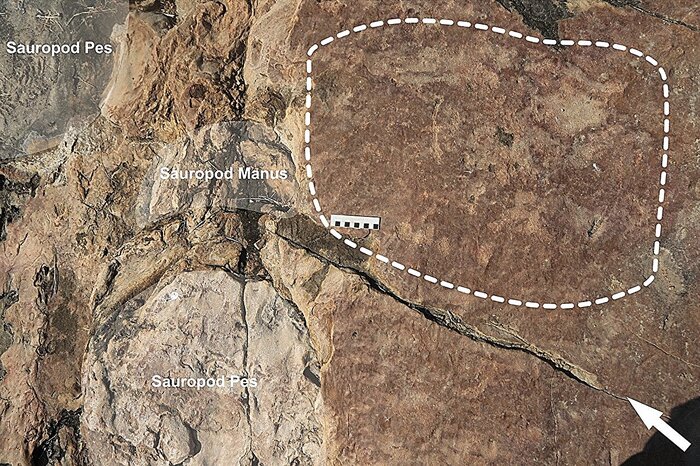Enlarge image
Footprints in White Sands National Park
Photo: AP
The prints that experts found in a dry lake bed in White Sands National Park have been wonderfully preserved.
Sometimes the toes have pressed into the ground as precisely as if someone had recently walked around the place in the US state of New Mexico.
The first of the fossil footprints were discovered as early as 2009. Now researchers have analyzed them more closely and at least indirectly dated their age using seeds that were in the prints.
According to this, the oldest are around 23,000 years old.
If that's true, it would be a bit of a sensation.
Because then people would have settled the American continent much earlier than previously assumed.
Then the first Americans set foot on the continent not until well after the climax of the last Ice Age roughly 20,000 years ago, but thousands of years earlier.
Last chapter of the migration of modern man
The discovery published in the journal Science also sheds new light on the question of whether humans were responsible for the extinction of many large mammals on the continent.
"The expansion to America is the last chapter in the migration of modern humans after leaving Africa," writes Matthew Bennett's team from Bournemouth University in the UK. The professor of environmental and geosciences is considered an expert in the field; he and colleagues from China recently described fossil foot and hand prints in Tibet as an early artistic act by hominins (read more here).
It has long been clear that man reached America from Siberia, but the timing was unclear.
Because an ice sheet blocked access to North America during the Last Ice Age Maximum (LGM) roughly 20,000 years ago, experts have long assumed that the continent was settled much later - either along the Pacific coast or via an ice-free corridor inland.
They referred to the legacies of the Clovis culture, spearheads and other stone artifacts that are around 13,000 years old, which coincides with the retreat of the glaciers.
Nevertheless, it seemed clear that someone must have set foot on the double continent before the Clovis culture.
Finds of tools, for example, which indicated an earlier immigration, have so far been controversial due to their dating.
This is also due to the fact that man-made tools, for example, can sink through soft sediment into the older layers below.
They then appear older than they are.
Finding footprints is therefore of greater importance, because they are an unmistakable sign of the presence of people who once walked over the layers in the ground to be dated.
The study now surprisingly shows that people were already in America at the maximum of the cold period.
Bennett's team analyzed eight groups of around 60 footprints from New Mexico.
The Tularosa Basin there, today a gypsum field covered by dunes, was then covered by lakes, the sediments of which preserved the footprints.
Imprints of teenagers and children
Most of the find layers are therefore between 21,000 years and 23,000 years old.
The team clearly assigns the prints to modern people, most of whom were teenagers and children.
The experts explain this with the division of labor at the time: young people were assigned to carry, and were usually accompanied by younger children.
In addition to human footprints, the team also found traces of mammoths, sloths, camels and predators.
The individual layers were dated using the radiocarbon method (C14) using the abundant seeds of the aquatic plant Ruppia cirrhosa.
However, some researchers are skeptical about the results.
In another »Science« article, experts who were not involved in the study certify that the team has worked diligently.
In view of the spectacular result, however, they demand confirmation of the age through other dating methods.
"The evidence presented here confirms that people were already in North America before the advance of the glaciers at the last glacial maximum closed the ice-free corridor and the route along the Pacific coast and prevented the migration of people from Asia," the team writes.
131,000 year old mammoth fossils
This would also mean that many large mammals survived the emergence of humans thousands of years longer than previously thought.
"This suggests that people's hunting techniques were sustainable, at least initially," write the experts.
For years, scientists have been discussing whether the majority of the North American megafauna disappeared through humans, through climatic changes, or through a combination of both influences.
There had been spectacular finds that indicated very early human activity on the American continent.
A few years ago, researchers believed they had found mammoth fossils and tools that should be 131,000 years old.
But there are serious doubts about that too.
joe / dpa






/cloudfront-eu-central-1.images.arcpublishing.com/prisa/VQTU76CCQRCCFMIRCRGOSKM7UQ.jpg)


